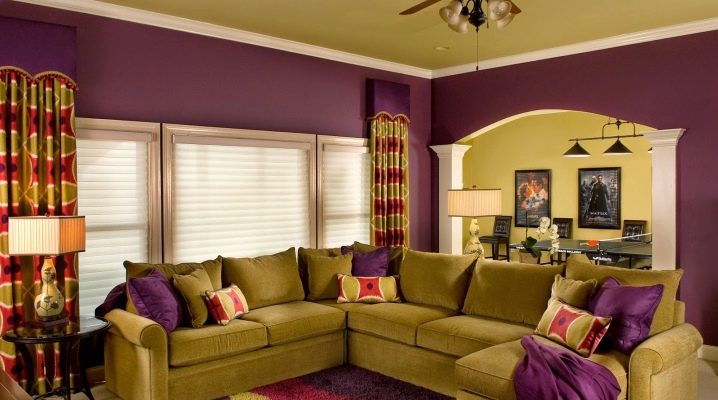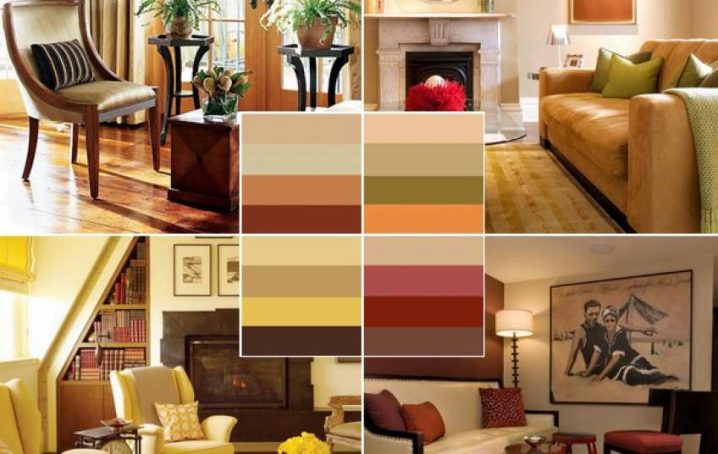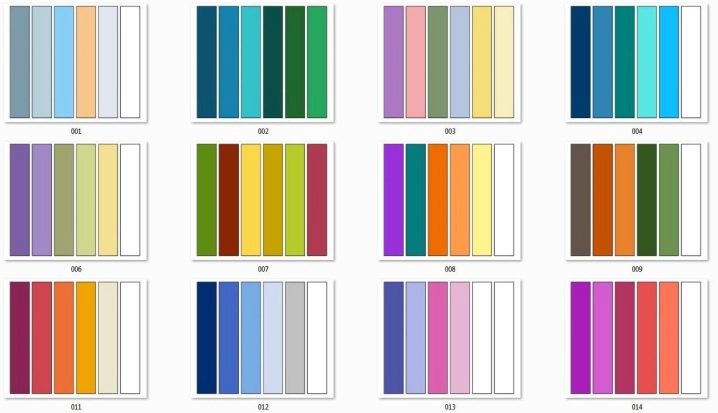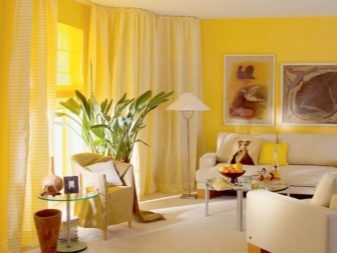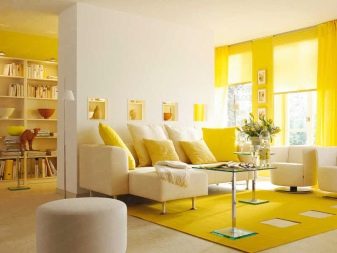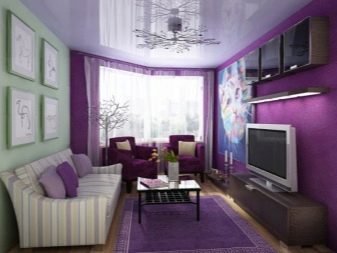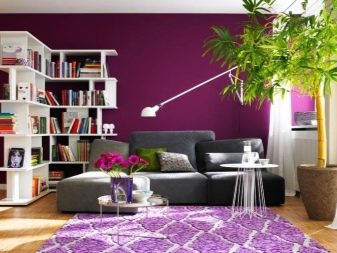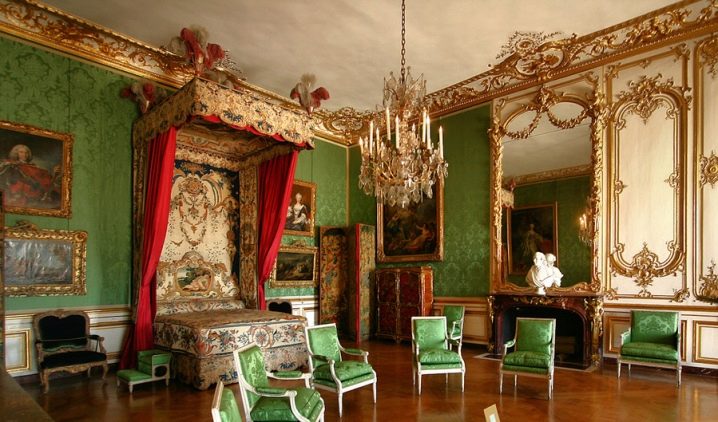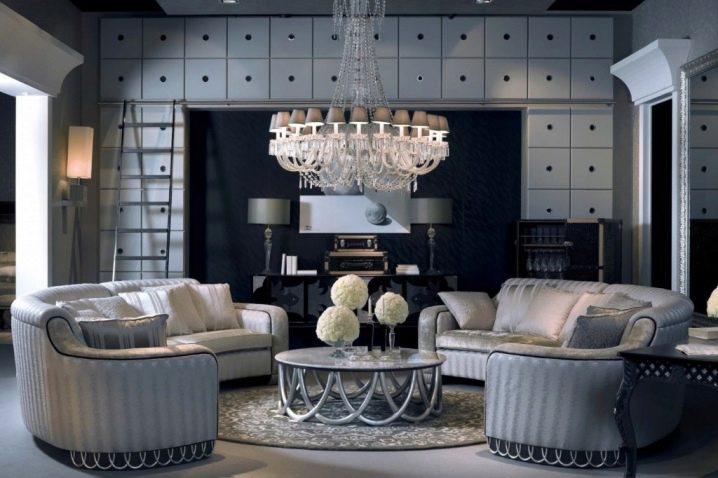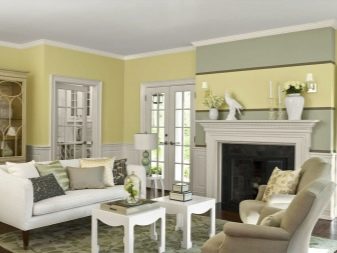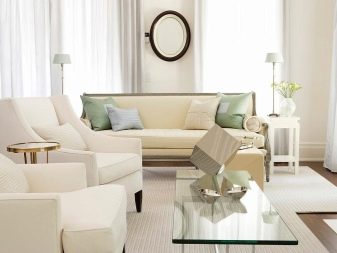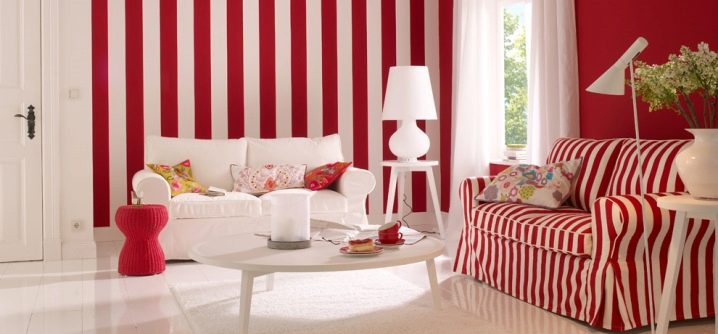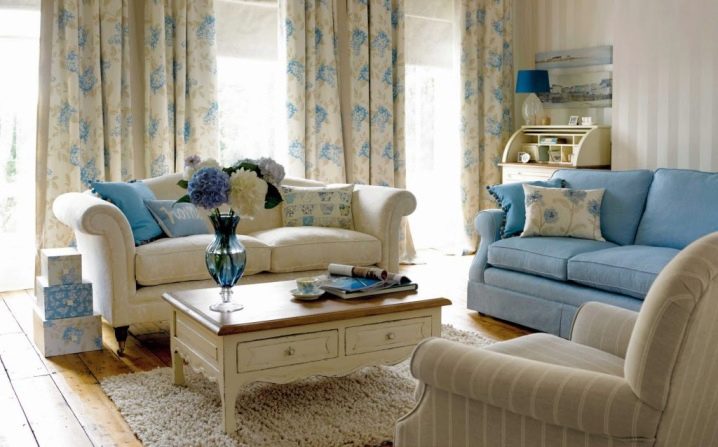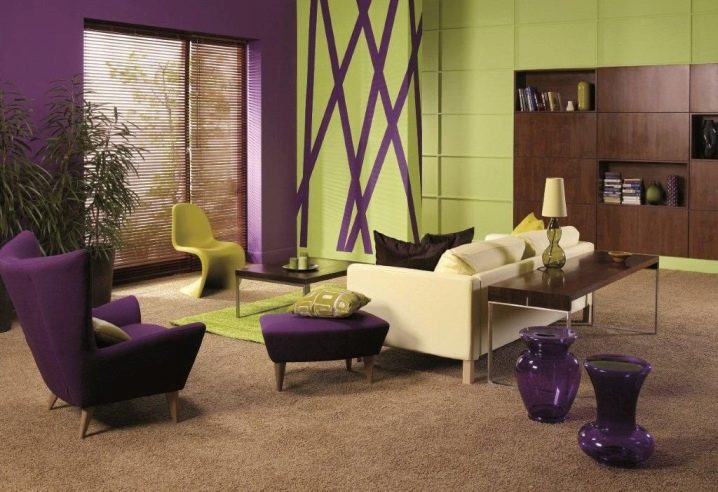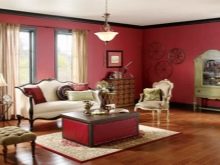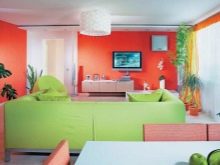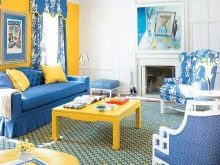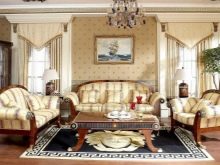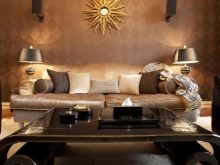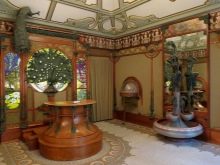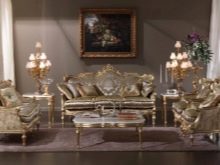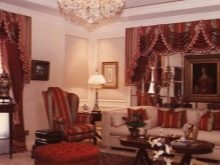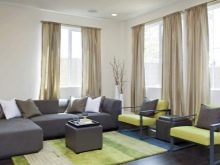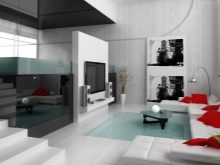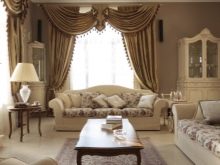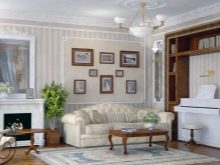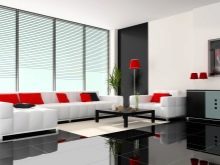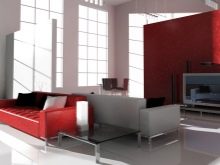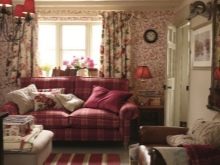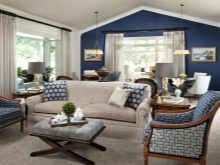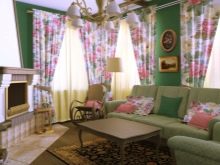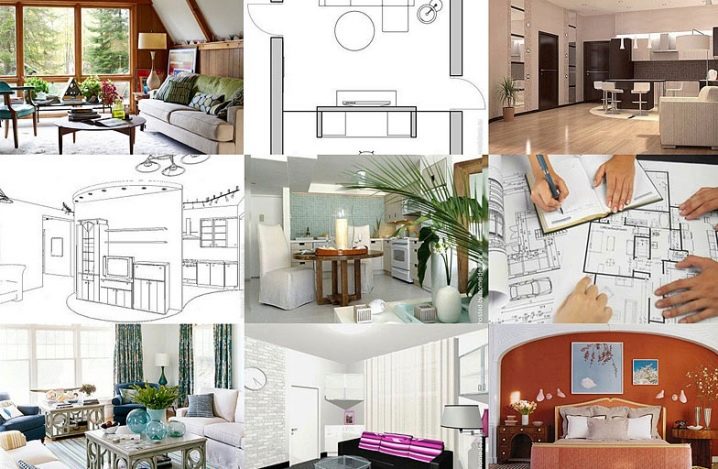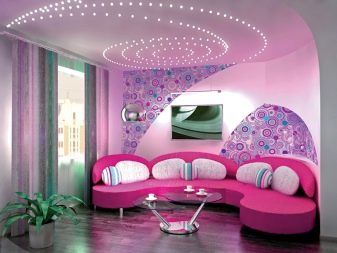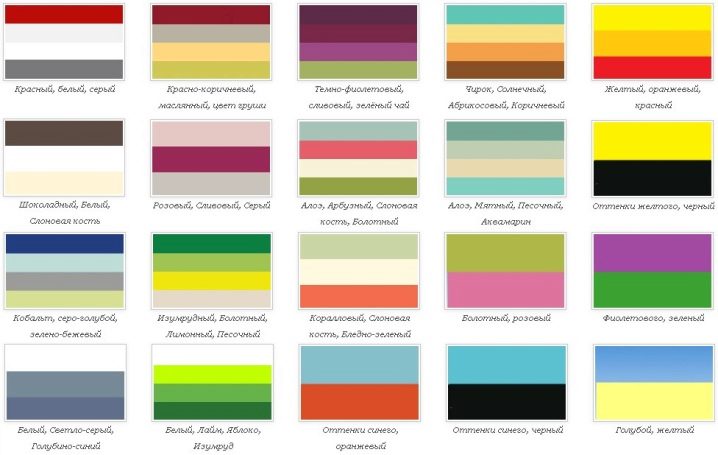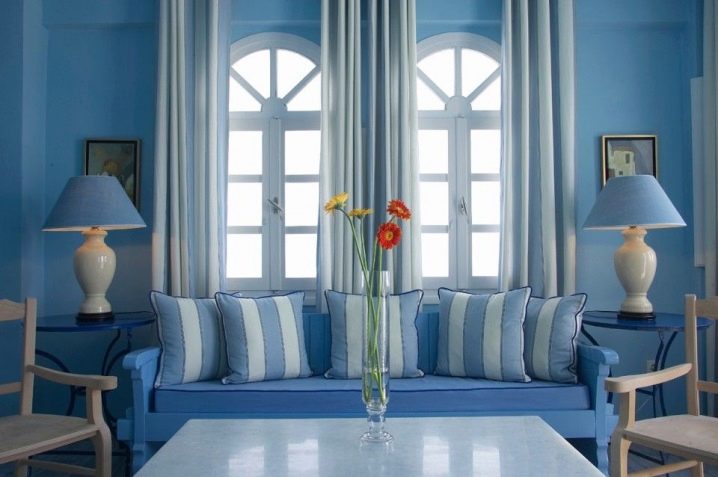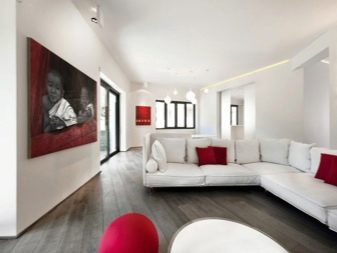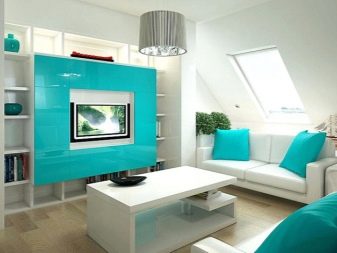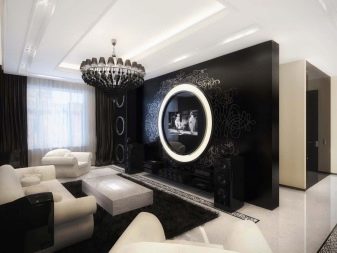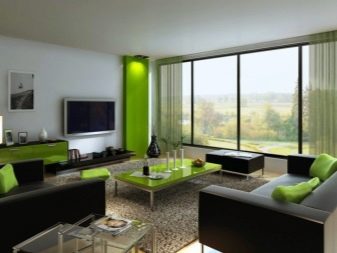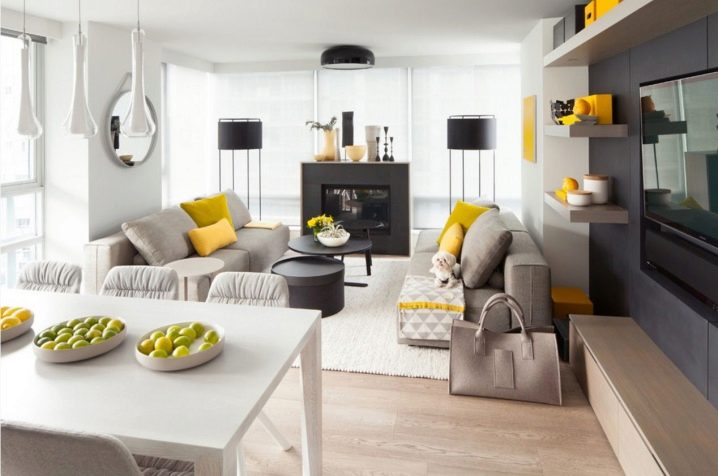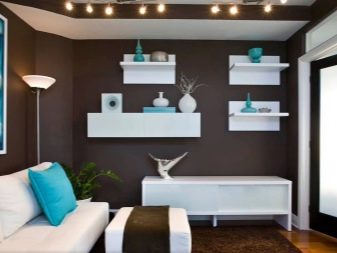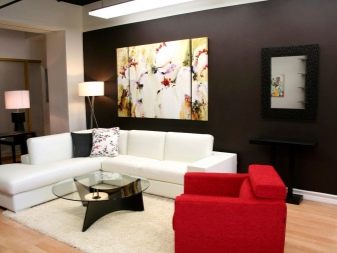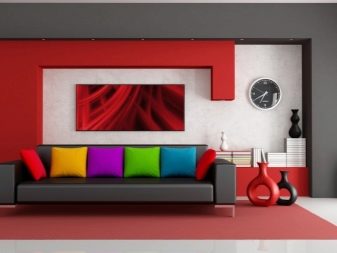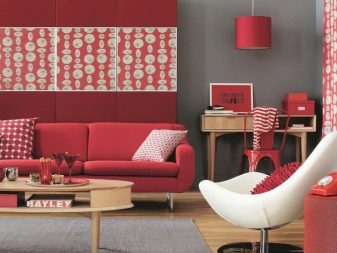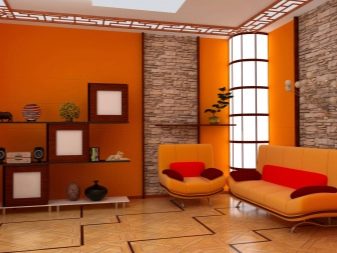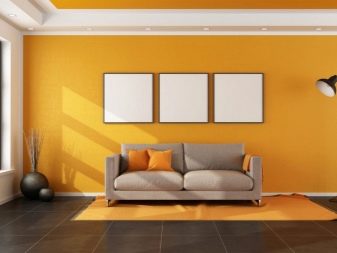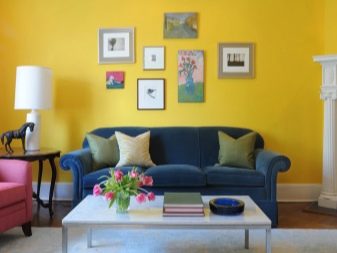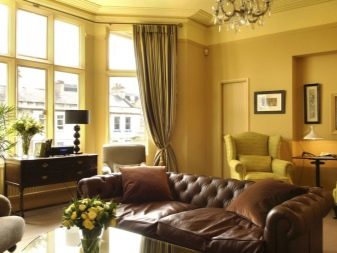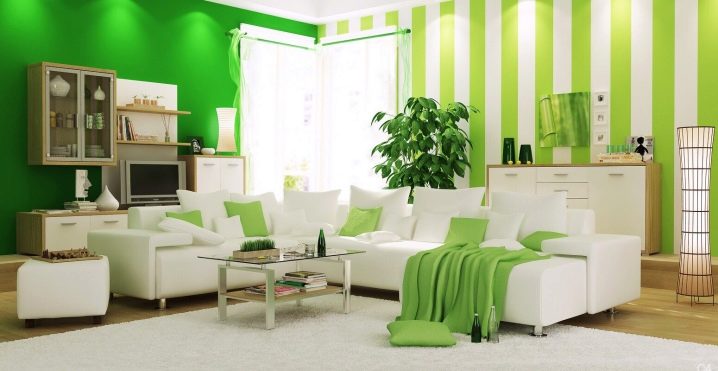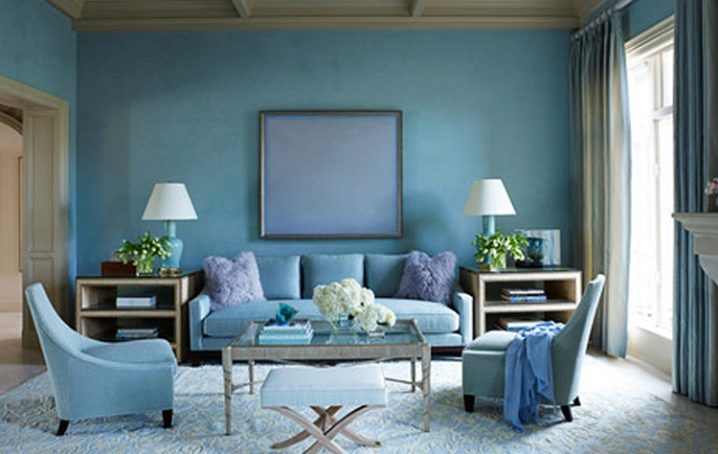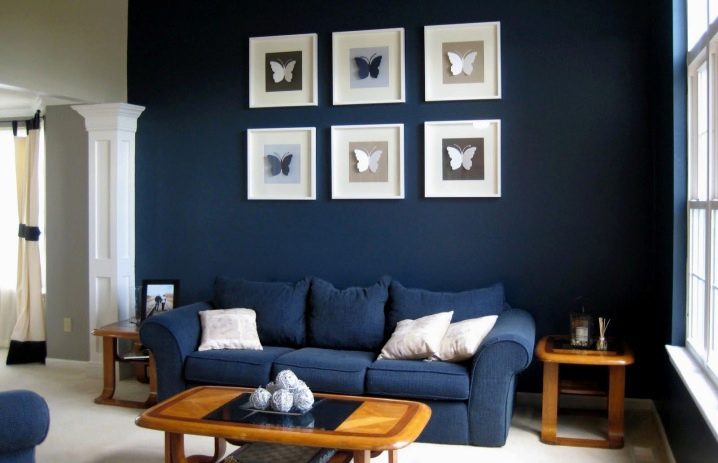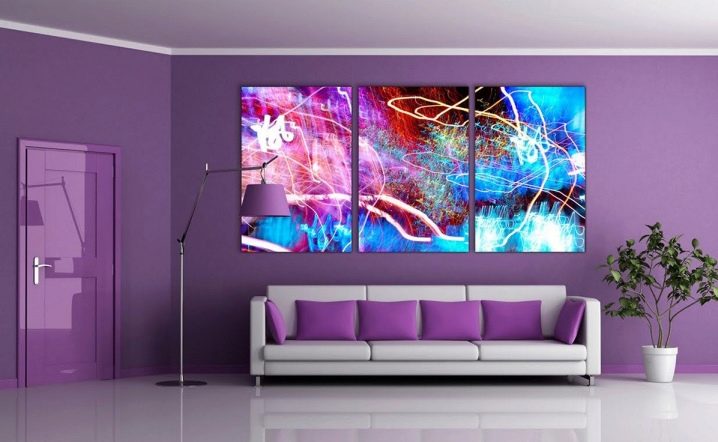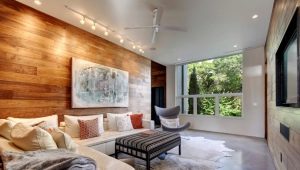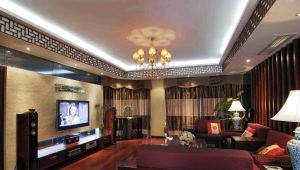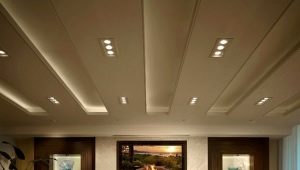Choosing the color of the walls in the living room: beautiful combinations
The living room is the most visited place in each apartment or house. All family members, relatives, guests gather here to relax, talk, celebrate something. For a comfortable leisure, it is important to properly think out the interior of the room and choose the color scheme, from which the mood and emotional state of others are more dependent.
Color palette perception
Psychologists have established a certain relationship of color with the psycho-emotional state of a person. This secret is actively used in the field of marketing.
With the help of a wide variety of palette colors, combinations of contrasts or the same color tone are selected. Turning on the fantasy, you can create unreal beautiful walls individually for your guest room.
Tone colors are classified as follows:
- cold includes green, turquoise, olive, blue, blue, lilac, brown;
- red, orange, yellow, pink, beige, burgundy tones, as well as their shades are warm;
- black and white are neutral.
Let's try to make out the properties of the basic colors of the palette:
- Yellow - this is a warm bright tone, which increases the overall concentration, stimulates to a quick decision. This is the color of energy, sociability, optimism.
- Orange - the color of joy, fun. Perfectly uplifting, releases emotions. It gives inner balance and spiritual harmony.
- Red - This is the color of emotions, rage, love, passion. In humans, can cause decisiveness in achieving their own goals. He also charges with sexual energy.
- Pink color symbolizes kindness, joy, femininity, friendliness. Adjusts for dreaminess.
- Maroon - the color of solidity, stability, sustainability.
- Purple - this is a shade of the spiritual power of man. Causes inspiration, helps to concentrate. Excellent stimulates brain activity.
- Blue - this is the color of harmony.Causes a sense of trust, well-being, security.
- Blue is a tone of conviction, symbolizes depth, wisdom, eternal values. Promotes concentration.
- Green - the color of nature, life, prosperity. He relaxes, pacifies, dispels negative emotions.
- White - This is the color of purity, tranquility, equality.
- The black balances the white color. Associated with infinity. Very often causes negative emotions.
- Brown - This is a tone of stability, practicality. Abstractly symbolizes endurance, diligence.
- Gray - it is a neutral shade between white and black. It has relaxing properties. It is very versatile, used in all areas of various activities.
Color combinations
To properly combine shades, you need to know what is combined with:
- White color is visually capable of enlarging the room. It can be combined with any bright color and its shade. The most beautiful combinations are red-beige-white, blue-sand-white, white-ivory-pink or khaki. White walls look beautiful with a dark floor.
- Black color looks expensive and is able to highlight any other tone.The most successful combinations: cream-black-burgundy, red-black-white, pink-black-gray.
- Brown is the color of tradition. Successful combined with beige and green, as well as with yellow and pale blue.
- Gray is recommended to be combined with very bright positive colors. Red-white-gray, green-yellow-gray, blue-gray-beige.
- Red color is recommended to be combined with quieter shades. Looks great when making a living room. It is successfully combined with white and orange, as well as with blue and gray colors.
- Orange or peach visually narrow the room. It goes well with pink and chocolate, pistachio and gray tones.
- Yellow visually expands the space. Looks great in combination with white, turquoise, burgundy, sandy shades.
- Green looks good with blue, white, gray, lavender shades.
- Blue is able to reduce appetite and be combined with a red, brown, beige tone.
- Blue color looks great with bright shades: yellow, red, pink. And also goes well with cream, gray.
- Violet visually narrows the space.It is combined with pistachio, sand, white, orange, black and beige flowers.
- Pink goes well with neutral shades: it is blue, beige, white, burgundy, purple and mint.
Combination of colors and shades
Before choosing the color of the walls for the guest room, you should first decide on the style in which the room will be decorated. There are a large number of styles for the living room:
- Antique style - This is a classic, noble interior design in the Greek style. That is why it is important to choose equally noble colors and their shades, such as brown, burgundy, mustard, blue.
- Avant-garde - This is a modern style in which it is allowed to use objects of different shapes, a combination of incompatible objects, materials and colors. In addition, a characteristic feature of this style is the contrast. Therefore, you can safely use red with green, yellow with blue, white with purple and many other bright combinations.
- Empire - this is truly a classic, official style. The interior looks very fashionable, luxurious and rich, as it is otherwise called the "aristocrat."It uses a combination of noble and pure colors - brown, purple, beige, blue, burgundy, pistachio.
- Art Deco - This is a trendy, modern style, which uses a combination of snake, crocodile skin with bright, bold, bold colors.
- Art Nouveau - This is an oriental style, in which they use for the walls a combination of fancy thickets, flowers, trees with soft, light shades.
- Baroque - palace style. It is characterized by an abundance of luxury and wealth. This style is characterized by the use of a combination of cold and warm shades of the basic colors of the palette.
- Biedermeier - a mixture of romanticism with the Empire. The main colors of the walls are pastel, light colors for psychological comfort.
- Victorian style combines pragmatism and materialism. That is why it combines a noble brown with a delicate beige tone, classic burgundy with a touch of coffee.
- Constructivism - this is an aesthetic, elite style. It is characteristic for him to use white in combination with black, blue, and brown.
- Classicism also a palace style.It is common to use classic, discreet, natural tones.
- Renaissance requires deep perspective and proportionality. Therefore, in this design direction it is important to choose colors with their full juiciness, and not shades.
- Minimalism It combines the basic colors - red, black, white and gray.
- High tech laconic, high-tech style. Requires a combination of black, gray, white, silver, as well as any bright color.
- Country music, in a different rustic style, uses milk, blue, pink, orange, in addition to wooden boards, natural fabrics.
- Provence has a delicate french flavor. It combines olive, pale green, lavender, white, pale pink, terracotta, creamy, pale blue.
Practical advice
Experienced designers know some secrets that are actively used in the design of room design:
- First of all, it is important to choose the dominant tone in view of natural light.
- Be sure to consider the color of the floor covering.
- The room should have three primary colors. They can be complemented by shades of primary colors.
- Remember that being two tones side by side, change the color of each other.
- To visually raise ceilings, paint them brighter a couple of shades than vertical surfaces.
- To visually expand your living room, use cool shades of the palette.
- If you are repairing using textured plaster or embossed wallpaper, remember that when drying the dye composition, the tone will become slightly muted. But on glossy surfaces, on the contrary, the color will look more bright.
- Also note that any color with artificial light looks a bit different than with natural light.
- In the narrow and long room of the apartment, paint the walls in different tones parallel to each other.
Do not forget that dark colors visually narrow the space, and light colors do the opposite.
- Vertical stripes make the room visually higher, but horizontal ones, on the contrary, are lower and wider.
- If in a small room to paint the walls in a single scale, then it will seem more.
- If you doubt the combination of tones, use the special tables that are usually used by designers.
Selection based on the direction of the world
If the windows of your living room are located on the south side, it will be better to choose colder shades. Since at lunch the walls will be actively illuminated by bright sunlight. Lack of heat is compensated by natural light. A great solution would be to decorate the walls in blue, blue, violet shades.
But if the room is located on the north side, the right decision will be to choose a warmer shade. In this case, the peach, lavender, beige, and yellow colors are perfect here.
Beautiful examples in the interior
If you choose white or beige as the main, dominant color, then an excellent solution would be to combine it with blue, red, black, yellow, pink tones.
The main elegant black tone looks beautiful with white, green, yellow.
Neutral gray can be successfully combined with yellow, green, white, beige and brown.
Traditional brown is combined with pink, white, green, yellow and beige.
The combination of aggressive bright red looks great with black, white, gray and yellow.
Cheerful orange is well combined with chocolate, milk, pistachio.
Noble yellow creates comfort with lilac, white, black, gray, brown.
Soothing green is combined with purple, white, gray, black, yellow, orange.
Light blue combined with white, yellow, green.
Soothing blue looks great with white, yellow, green, beige.
Dominant purple is combined with beige, green, gray.
How to choose a color palette for the walls in the living room, see the next video.
